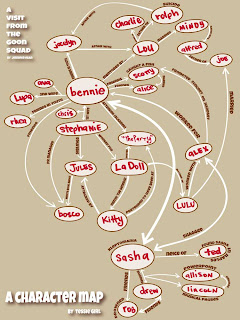Mirror, Mirror
Recently I bought a copy of a pretty well reviewed and promoted speculative fiction novel. About two chapters in, the main character looks in a mirror and describes themself. I literally closed the book and stopped reading. The novel had other issues, but this put me right out of the story. This technique - being generous here - occurs a lot in first person narratives, about as often as a story beginning with the main character waking up from a dream. The mirror device is best avoided, but not necessarily because it's so overused - it's best avoided because simply put, it's so easy.
A character, especially a protagonist, should never be described; they should be imagined.
This comes down largely to style and preference, but the pleasure of reading is the exercise of the imagination. A movie or a video game robs us of our need to work this particular muscle - it flexes other ones in the best of these - but in fiction, we're the pilots of cars our minds determine through the negative space our words create. What do I mean by this? I love describing and descriptions of setting. Setting contributes to our understanding of character, same as dialogue. Where a person lives informs our picture of who they are and what they may look like. The best writers convey setting with the same subtlety I'm advocating for character - I like rich description in setting. Descriptions of character, save for some aspect of their appearance that is integral to the story or that simply can't be deduced from other clues (their background, speech, the insight of their counterparts), I avoid those by and large. Writers of fiction should avoid describing their characters in detail, period. What the reader brings to their reading - their background, speech, the insight of their counterparts - is half the joy of fiction itself.
In my novel The Book of Elizabeth, I don't describe the character of Alice at all, except for the probably too cute aspect of her having an 'apple belly.' Most of the comments I got from readers all mentioned in some way how they could picture Alice - how they felt like they knew her - which is testament only to the fact that her setting (rural Iowa, 1986) and her speech ("So, like...") helped create a mental picture of someone who is now largely their own.
As Elmore Leonard mentions in his own 10 rules of writing: a character in John Steinbeck's Sweet Thursday says: "I like a lot of talk in a book and I don't like to have nobody tell me what the guy that's talking looks like. I want to figure out what he looks like from the way he talks."
When you're writing your story, create your character through they way they talk. Their home. The car they drive, or what they eat. Each detail will create the border around a space the reader will fill in on their own, and by doing so, you create something you can never describe.
A character, especially a protagonist, should never be described; they should be imagined.
This comes down largely to style and preference, but the pleasure of reading is the exercise of the imagination. A movie or a video game robs us of our need to work this particular muscle - it flexes other ones in the best of these - but in fiction, we're the pilots of cars our minds determine through the negative space our words create. What do I mean by this? I love describing and descriptions of setting. Setting contributes to our understanding of character, same as dialogue. Where a person lives informs our picture of who they are and what they may look like. The best writers convey setting with the same subtlety I'm advocating for character - I like rich description in setting. Descriptions of character, save for some aspect of their appearance that is integral to the story or that simply can't be deduced from other clues (their background, speech, the insight of their counterparts), I avoid those by and large. Writers of fiction should avoid describing their characters in detail, period. What the reader brings to their reading - their background, speech, the insight of their counterparts - is half the joy of fiction itself.
In my novel The Book of Elizabeth, I don't describe the character of Alice at all, except for the probably too cute aspect of her having an 'apple belly.' Most of the comments I got from readers all mentioned in some way how they could picture Alice - how they felt like they knew her - which is testament only to the fact that her setting (rural Iowa, 1986) and her speech ("So, like...") helped create a mental picture of someone who is now largely their own.
As Elmore Leonard mentions in his own 10 rules of writing: a character in John Steinbeck's Sweet Thursday says: "I like a lot of talk in a book and I don't like to have nobody tell me what the guy that's talking looks like. I want to figure out what he looks like from the way he talks."
When you're writing your story, create your character through they way they talk. Their home. The car they drive, or what they eat. Each detail will create the border around a space the reader will fill in on their own, and by doing so, you create something you can never describe.



Comments